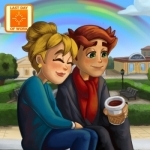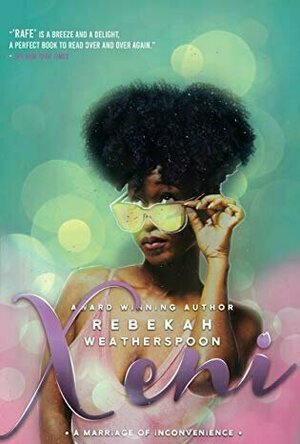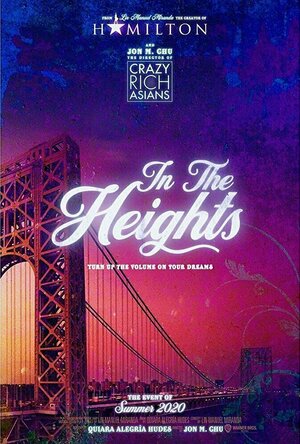
Advanced Naming Therapy Lite - Aphasia & Cognition
Medical and Education
App
Take your speech therapy to the next level! Practice word-finding skills for adults with aphasia...

Tiếp thị & Gia đình Magazine
News and Magazines & Newspapers
App
Tin nóng: Ứng dụng iPad và iPhone của Tiếp Thị & Gia Đình, tuần san có số...

Lonely Planet Pocket Florence & Tuscany
Lonely Planet, Nicola Williams and Virginia Maxwell
Book
Lonely Planet: The world's leading travel guide publisher Lonely Planet's Pocket Florence is your...

A Woman's Decision: Breast Care, Treatment & Reconstruction
Karen Berger, John Bostwick and Glyn E. Jones
Book
Answers to your patients' most vital, heartfelt questions! For years, A Woman's Decision has been...
BankofMarquis (1832 KP) rated Jungle Cruise (2021) in Movies
Jul 30, 2021
Yes…Disney has made another movie based on one of it’s them park rides and this one is more like the first PIRATES OF THE CARIBBEAN film than most of the other attempts.
Directed by Jaume Collet-Serra (several Liam Neeson action flicks like NON-STOP), JUNGLE CRUISE is part PIRATES, part INDIANA JONES and part AFRICAN QUEEN (look it up, kids) as we follow an adventurous young lady in the 1910’s. She heads to the Amazon and hires a ne’er do well Jungle Cruise skipper to take her up river.
Pretty standard set-up, right? We’ve seen this “mis-matched” frenemies premise before but in the hands of Emily Blunt and Dwayne “The Rock” Johnson, it is a very entertaining (albeit familiar) ride with 2 tremendously charismatic performers working off each other very well and they look like they are having as good a time in this film as we are.
They are joined by a bevy of assorted characters that help fill out this journey. Edgar Ramirez and Veronica Falcon are enjoyable enough as a couple of characters along the way, while Jack Whitehall surprised the heck out of me as the wimpy brother to Blunt’s character who becomes more and more three dimensional as the film progressed - something I didn’t think this film would even think about doing.
A pair of wiley veterans - Jesse Plemons and good ol’ Paul Giamatti - are also on board and each add some (but not a lot) to this film. Plemons is the main villain and he just wasn’t villainous enough for my tastes while I wanted much, much more of Giamatti’s character than was in this film (and it is a rare film, indeed, that you are left wanting more with a Giamatti character).
But make no mistake, this is a Rock and Blunt flick and these two professionals hold the center of this film together very, very well.
Director Collet-Serra keeps the action (and comedy) moving along at about the right pace, never dwelling too long on any of the plot points (for if you were to think too much about any of it, it would fall apart) and (for the most part) keeps the action sequences fun and coherent and avoiding over-directing, over-CGI-ing and over-loading these sequences.
Speaking of CGI, the main issue with this film is the special effects work - it is not the best (probably a budget issue) and, at times, you really need to suspend disbelief in watching the CGI and convincing yourself that it is a Live Action film you are watching and not a cartoon.
But, since the intended audience for this film are families, the less-than-perfect CGI (at times) is forgivable as JUNGLE CRUISE provides plenty of PG-Rated action and fun that the entire family will enjoy.
Letter Grade: A-
8 stars (out of 10) and you can take that to the Bank(ofMarquis)
Xeni Everly-Wilkins is devastated when her beloved Aunt Sable passes away. The two were less close than she wanted, thanks to Sable's ongoing feud with her sisters (including Xeni's mom), but Xeni loved her nonetheless. Xeni heads to New York to help clean out her aunt's house and learn what she may have inherited. But when Xeni arrives at the lawyer's office, she finds out her inheritance comes with a big catch: she must marry to claim Sable's (sizable) estate. And Sable had someone in mind: local chef Mason McInroy, a handsome Scottish man who just happened to play the bagpipes at Sable's funeral. Mason stands to inherit from this scheme too; he and Sable were close. Xeni and Mason each have their own reasons to say yes to Sable's insane scheme, but neither has any plans to fall in love. Right?
"'In order for either of you to claim any of this, Ms. Everly asked that you to be married. To each other.'"
OK, I have no idea where this book came from, but it was the one "X" book on my shelves. It's a total trip with a ton of crazy story threads going on, but honestly, I enjoyed it! Even with the family drama, the arranged marriage, the mentions of witchcraft, the instalove, the sexy times, and more!
So, yes, the plot for this book is a bit outlandish. You have to roll with it--Xeni and Mason meet at the lawyer's, find out they have to marry quickly to inherit money, and... just get married. A lot of sexual scenes soon ensue--if you do not enjoy sexy times in your books, I would not recommend picking up this one. I was not prepared for, umm, all the detail, but I appreciated how open the author was with bisexuality and sexuality in general.
The instalove (instalust?) between Xeni and Mason is a bit hard to take at first, but truly, they are rather adorable and pretty easy to root for. Mason is just as cute and sweet as can be, and poor Xeni, she's going through a lot. Even though there is not a ton of character development here (why does Xeni believe in witchcraft, for instance?), you can't help but want Mason and Xeni to overcome their obstacles and make this absolutely ridiculous marriage work. Especially if they can spite their sometimes rather awful families. (Sidenote: Xeni's family clearly has a lot of issues, and it bothered me that we never got to see if they were truly resolved.)
Overall, I'm not sure if I would have gravitated immediately toward this book without my #AtoZChallenge, but it turned out to be a pretty fun read. It was silly, but rather beguiling and certainly steamy! It was a good change of pace. 3.5 stars.
Emma @ The Movies (1786 KP) rated In the Heights (2021) in Movies
Jul 18, 2021
Usnavi is saving up everything he can as he plans a future back in the Dominican Republic. Living at the centre of his neighbourhood, we join his story and the dramas of the community.
In The Heights dives into the stories in the hot spot of the community as a heatwave bears down on them. Families, friendships and business dealings, all come out of the woodwork as they try to cope with the heat... and it does all of that with some and dance thrown on top.
I know that Lin-Manuel Miranda is all the rage these days, but I don't enjoy the talky-singing that's a bit of a trademark. Here though, the jazzy beats and hip-swaying tunes really helped. Had I not been restricted by the fact I was in public and it's generally frowned upon to do it in the cinema, I would have been dancing. With that restriction though, it was dropped to toe-tapping and shimmying in my seat.
There's a lot of talent in the cast, though not all the singing was music to my ears. With so many cast members I'm not going to go into the individual performances because, while a handful of characters are bigger in the story, it's very much an ensemble piece. Together they have great chemistry, and those relationships shine because of it.
Choreography during the numbers is fantastic, and the use of space in and out of those moments worked well with the confined spaces. There's one scene in particular that was very inventive and (even though it gave me a vertigo wobble) it helped to make the song stand out from the others... though there's probably something in every song that I could pick out for the same reason.
Design of... everything... is great in In The Heights. There's not really a point where your eyes aren't darting about looking at the sets or following the performers. If there aren't awards in this film's future then I'd be surprised, it would have to be something epic that beat this.
I didn't have that previous connection with the theatre production, and I think that would definitely have helped matters. In the theatre setting the long runtime never feels like it's actually that long, you have the intermission and scenes are broken up by the nature of it being a live performance. 2 hours and 23 minutes isn't really that long in that context, and these days it's not even particularly long for a film. But as a film, I did feel its length. I'm also one of those people that goes to theatre productions and likes to see what peripheral characters are doing, and that's not something you can easily do in a film. I may listen to the soundtrack at some point, but I don't think I'm in any rush to rewatch In The Height even considering all the things I enjoyed about it.
Originally posted on: https://emmaatthemovies.blogspot.com/2021/07/in-heights-movie-review.html

Virtual Town
Games and Entertainment
App
***NOTE: Some older devices will not be able to play Virtual Town well right now. That includes:...

Farm Animals Makeover - Cute Virtual Pet Salon
Games
App
Welcome four farm animals to your beauty salon! Play kids favorite makeover games with kitty, bunny,...

Family Album Mitene
Photo & Video and Social Networking
App
Watch your children grow up. Anytime. Anywhere. Always! Organize and share unlimited photos and...


